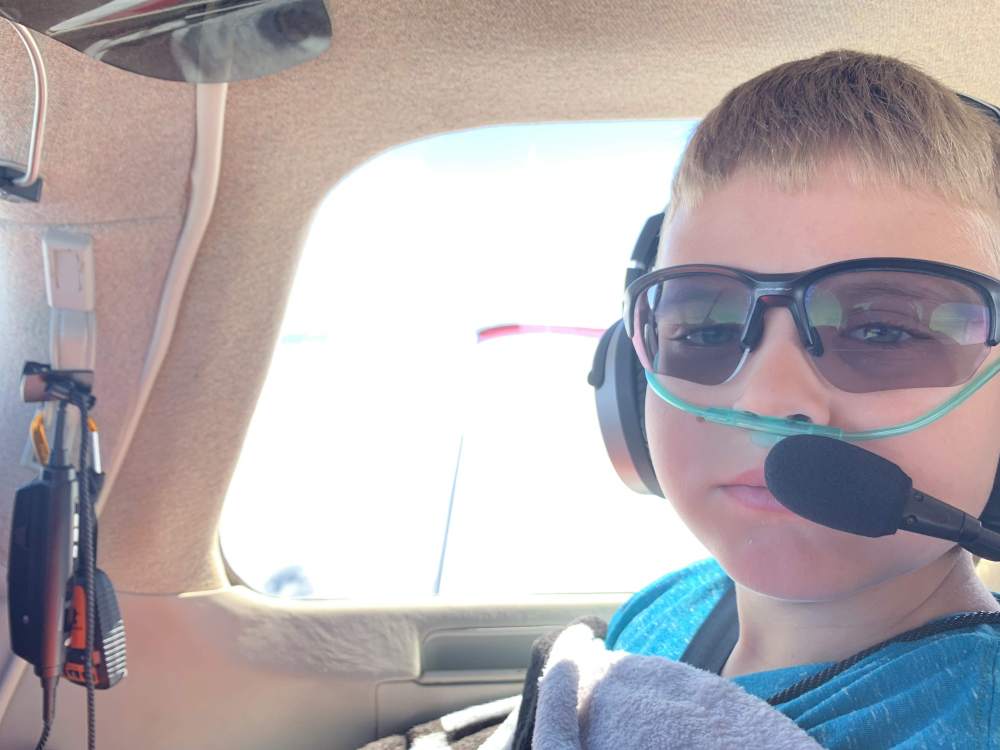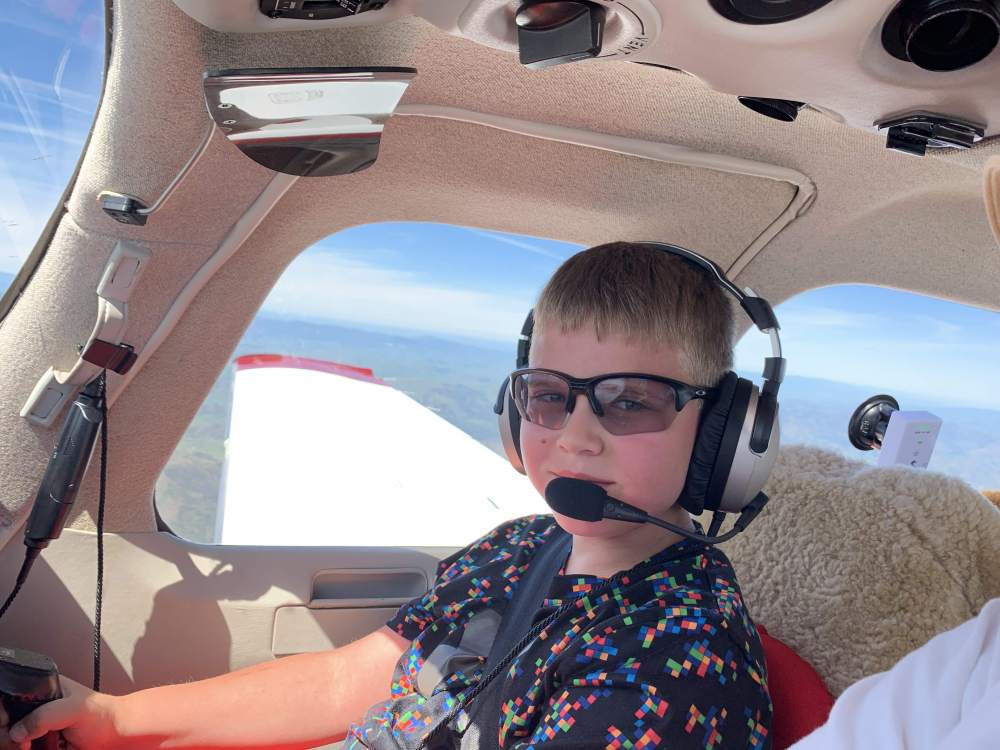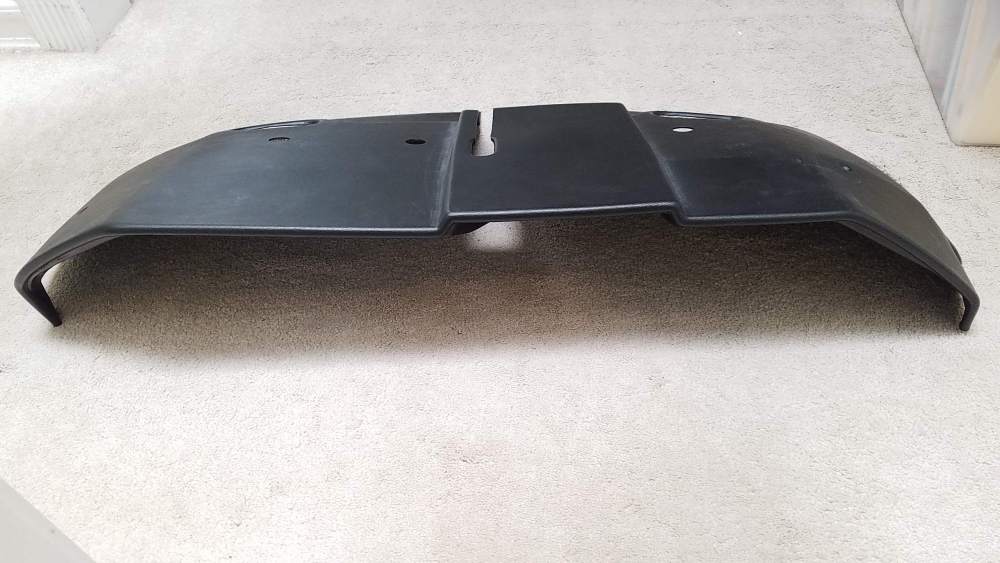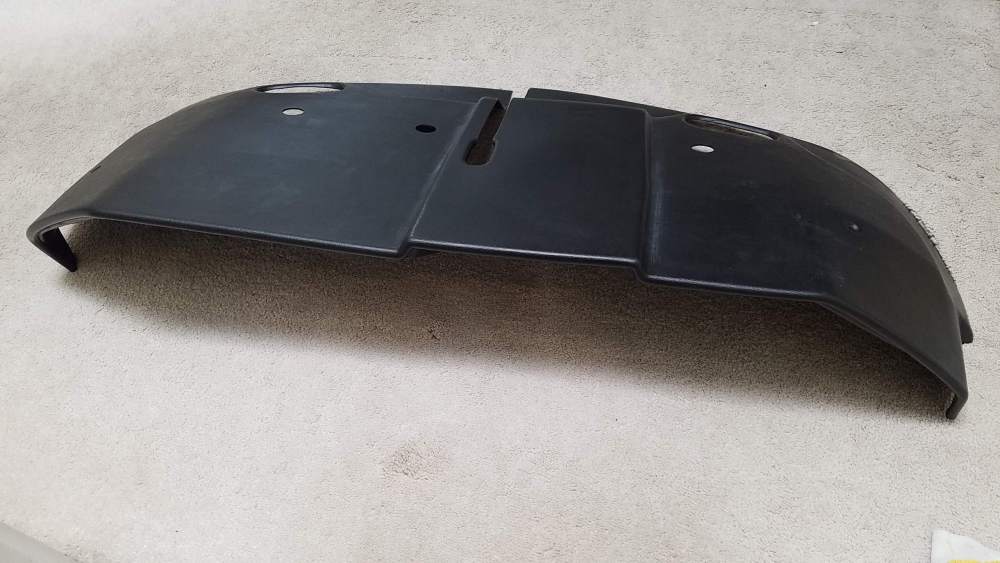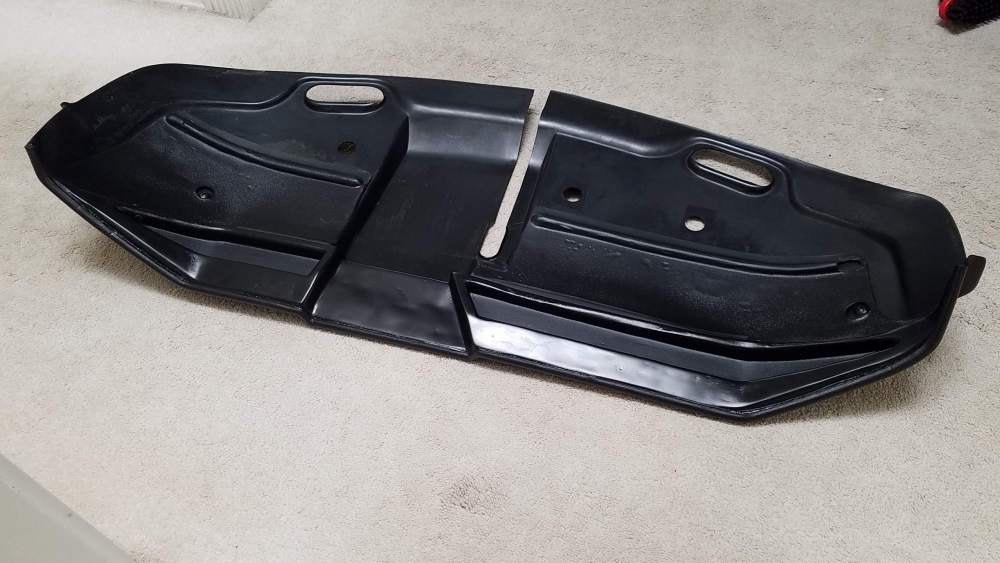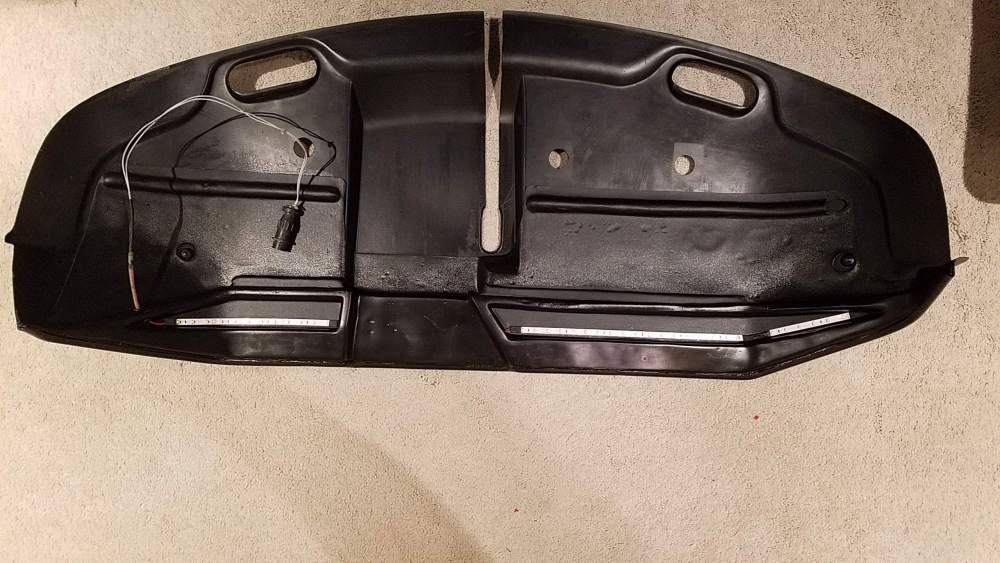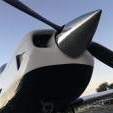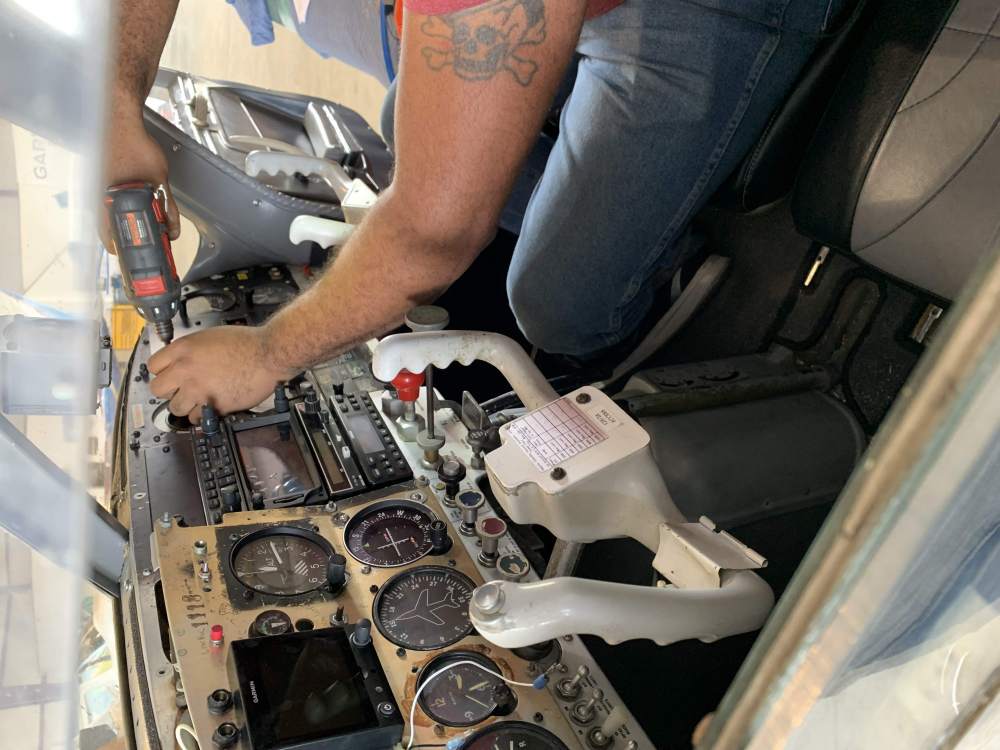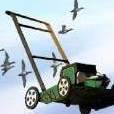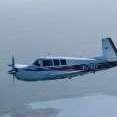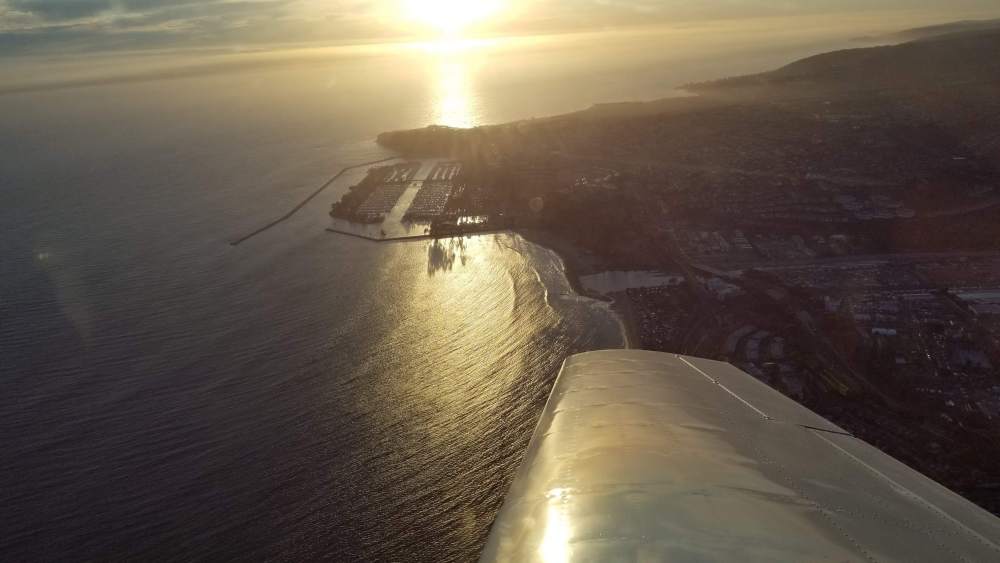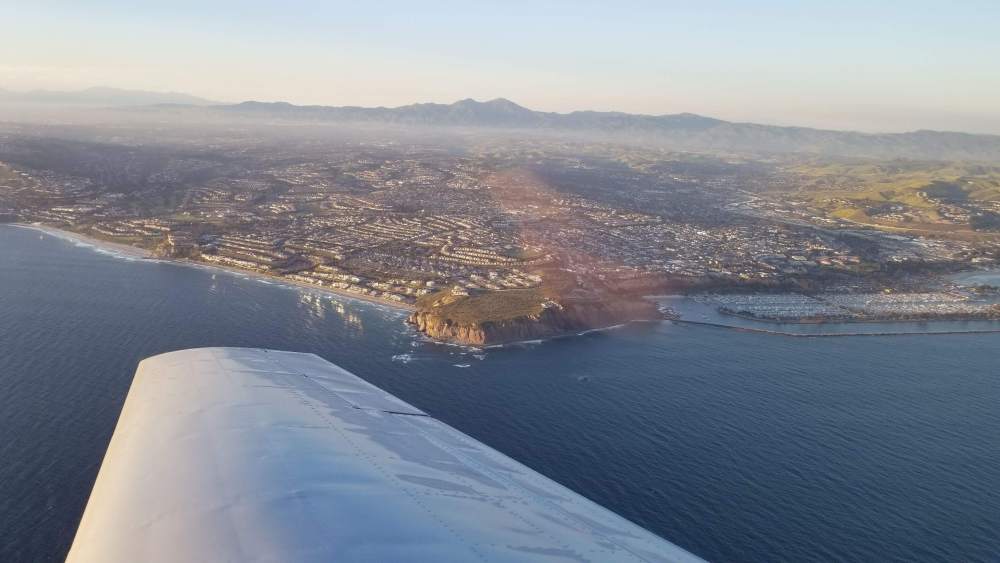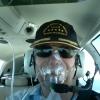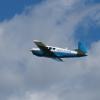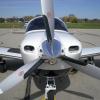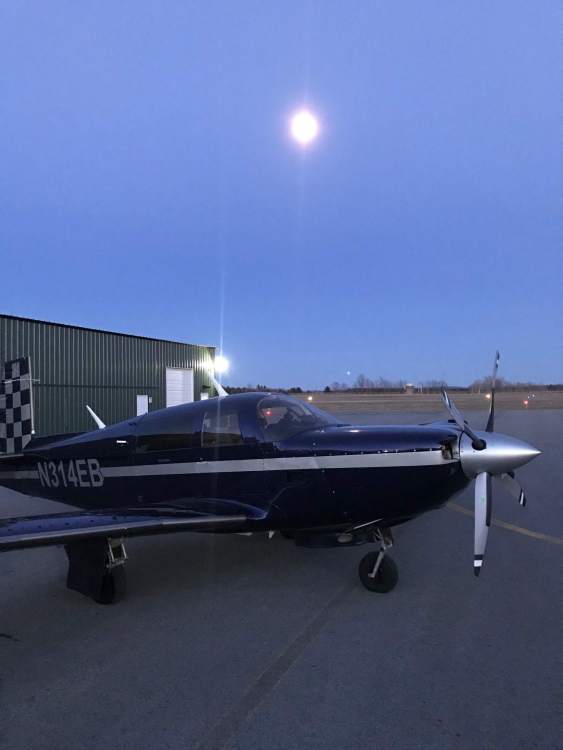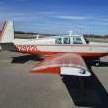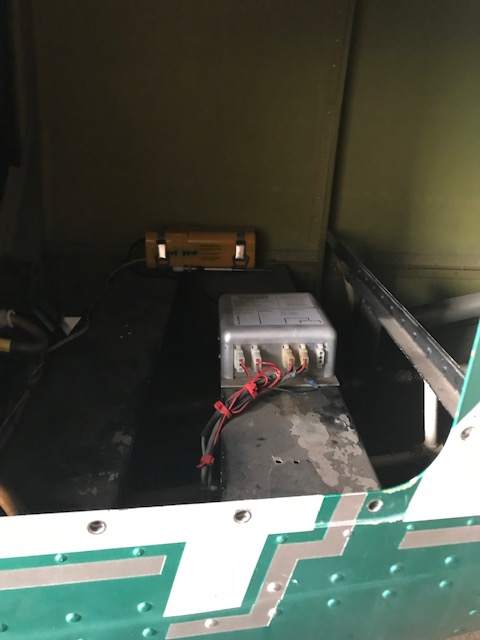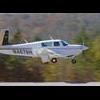Leaderboard
Popular Content
Showing content with the highest reputation on 04/19/2019 in all areas
-
Finally got back from Tahoe with Sassy Copilot. He flew most of the way back. On the way up we had thunderstorms and ice- on the way back severe clear! He likes to turn the heat up so I told him he had to get a blanket because I didn’t want to pay the heating bill (the truth is that the weather was enough to make me sweat without a heater!). Extra HP, fuel and TKS sure are nice to have on board.5 points
-
4 points
-
Don’t fear, they submitted a 337 for it. It’s A okay... Sent from my iPad using Tapatalk Pro3 points
-
I had an JPI 830 prior to the installation of the TXi and found the data much eaiser to read and disciminate from the factory 700. No, I am not continuly chaning my RPM and MAP during flight. I have a set numbers I go to for 65%, 75%, LOP and ROP operations but because those are based also on FF and OAT, I like having the %HP quick calcualtion on my screen. I asked Trek (Garmin) about the TIT and the %HP for the EIS in multiple private messages when ordering my TXi, and he told me the TIT (number) was planned in a future release but no plans for %HP. That was enough for me to decide against the EIS for now, even though I would love to save the panel space. I decided I was not going to *wait* for future development and decided on the JPI 930 with rebate. I figure I can replace the JPI 930 (head-unit) with the EIS by only cutting a new planel and re-using JPI probes. I think there is one (or two) JPI probles that are not compatible with the EIS. I hope they update it to the level of the JPI.3 points
-
3 points
-
given that I found an alternator bracket that was installed upside down by the last certified mechanic which technically made the plane unairworthy I am going to trust my judgement before some random person on the internet.3 points
-
I spent a lot of time trying to find someone to install a GFC 500 in my airplane without feeling like I was being robbed. I had several good bids, but they were for installs in either September or December. Another was for a June installation, but for too much money. Today I flew out to Minden and was happy with what I saw. A reasonable bid, not the lowest, but reasonable. They could start near the end of the month after the parts arrive. They were ordered yesterday, and the job should be done before MooneyMax in June. I'll give a pirep when the job is done.2 points
-
Headed home after first annual on my “New to me” 231. Thanks Don and Paul Maxwell. What a first rate shop. Sent from my iPhone using Tapatalk2 points
-
Just got my plane back from avionics upgrade, I have a 66 m20 e , I took it to stark avionics in ga, had a gtn 650, gma 345, g5, and a stratus adsb i/o, total price (which no one ever seems to tell) and added a master switch, was $24,000, stark finished in the time frame quoted and the price was the same as well, the equipment works awesome.2 points
-
2 points
-
It doesn't have anything to do with a PMA. A PMA is something different entirely. That's for manufacturing a replacement part that is the same as an original part but manufactured by someone else. For example, a replacement CHT probe could have a PMA. A TSO / STC part is a part manufactured to meet a standard (the TSO) and the STC basically provides the approved data that you can modify the airframe to use the part (which may be specified by a TSO). The STC for the 830 specifies that the aircraft is otherwise unmodified and expressly requires that CHT instruments required by the original type design be retained. The STC for the 900 does not have this limitation. An IA could submit it on a 337 but its anyone's guess if the FSDO will accept it as the STC won't serve as approved data for that since it expressly excludes what you want to do. You'd need another source of approved data that the 830 will meet the requirements to replace the ship's CHT. I suspect you are going to need to fix the ship's CHT gauge, replace it with something that can stand alone like an EI CHT gauge, or swap out the 830 for a 900 that can serve as a primary engine instrument. 830 STC: https://www.jpinstruments.com/wp-content/uploads/2012/10/2586-AML-Rev-14.pdf 900 STC: https://www.jpinstruments.com/wp-content/uploads/2012/08/930-STC-SA01435SE.pdf2 points
-
This news sucks....I am going to cancel my order.....2 points
-
I remember years ago getting on a Piedmont jet and watching a maintenance guy tape up a hole in the wing. I was a little nervous about him doing that but I was more nervous when the patch didn't even make it through takeoff.2 points
-
2 points
-
I've moved on :-) I think when you read through all the threads, there seems to be a variable number of holes that come from the factory. The W&B was noted. and the W&B I run on the phone has my fat furry ass sitting further back. I think more weight aft makes my plane faster than others.2 points
-
Everyone is reluctant because it does not fit the definition of a major alteration (major mod is your term, let’s stick to the FAA’s verbiage). Seat rails are not a structural component of the airframe and that is what is meant by “structural”. By your definition drilling any hole would require a 337 because there is no such thing as a hole that does not affect the structure of the object being drilled. The question revolves around whether the object being drilled is structural to the airframe. The answer in the case of seat rails is no. Your CG argument doesn’t hold water either. Neither the CG range nor the max gross weight of the aircraft is being altered. Extending the seat’s CG station aft slightly while keeping it within the factory specified CG range does not constitute a major alteration. It does not affect weight, balance, structural strength, performance, powerplant operation, flight characteristics, or other qualities affecting airworthiness. It appears as though you’re trying to make this into something that it’s not. I would never try and get in between a man and his desire to generate paperwork. Knock yourself out when it comes to your own aircraft. I am genuinely confused by your determination to inflate such a minor change made on someone else’s airplane into a Major Alteration. I’m not saying you wouldn’t be able to find a FSDO to except it as such, but there are still quite a few commonsense folks at the FAA that would tell you that this does not meet the definition of a Major Alteration.2 points
-
I suspect the airplane is still for sale 6 months later, and I suspect at that price it will remain for sale unless Smitty purchases it. I sincerely hope he doesn't, I don't like to see anyone fleeced.2 points
-
After landing last time the tower told me my transponder had dropped out on short final. Had it checked and everything looked good, strong signal, everything. AP/IA said to go fly it and ask ATC to keep an eye on it so after work I took her up. Asked for closed traffic and an extended downwind, told tower we were trouble shooting a transponder issue and if he could keep an eye on me to see if it dropped out. Landed and all looked good so went for a longer flight and it was beautiful. The only thing better than the flight was my landing and I taxied back and put the plane away. Then it got sad, and a sobering reminder of the risks involved in this hobby. As I was driving away from my hangar I heard a plane getting ready to depart so I stopped and rolled down the window to watch. It was a twin (Duke) and I watched as he rolled down the runway and lifted off, then rolled up my window and started to pull away when I caught the fireball out of the corner of my eye. It took a couple of seconds for my mind to process what I was seeing. Impact was only about 1,600' from where he started his takeoff roll, just to the left of the runway on the taxiway. This one hits a bit too close to home. I called my wife immediately to let her know I was okay. My prayers go out to the family who just lost a loved one. I am not going to speculate on what happened here, and in no way am I saying that this pilot was not vigilant and on his A game, maybe he was and maybe there was nothing he could have done to prevent it. But, it is a reminder to me that I can never let myself get complacent.2 points
-
A minor alteration is defined as anything that isn't a major alteration (by Part 1.1), and major alterations are defined by Part 43 App A and Part 1.1, as previously cited. Being reluctant to call something a major alteration should be the default. If it doesn't qualify as a major alteration under the stated regs, it isn't one. I haven't seen anything close to something I'd call a justification of this being a major alteration.2 points
-
Because the FAA doesn't list it as a major mod. Because the CG is only effected while slid back, and that can be calculated preflight. Kind of like others here who take off then slide their seats all the way back. The seat rails are already full of holes, thenpiece at the back serves no additional structural function affected by another hole. It's not an "appreciable" change. His IA is fine with it. Should I keep listing reasons, or can I stop? Why do some people repeatedly insist that everything is a major mod, when the FAA has kindly defined what they think is a Major Mod? Or is your opinion more worthy than the FAA's either because it's more restrictive or because it's your opinion???2 points
-
here is the link with every flight since install of the EDM 900 https://savvyanalysis.com/my-flights/1006534/e12e2b6c-01aa-4ac4-88dd-f955502552632 points
-
I’ve been talking to him too, if he doesn’t show I think we should just fly over to Mallards landing instead2 points
-
I have no dog in this race, other than general dislike for people who say that everything not cover3d under PMS, STC, etc., is of coirse a major modification requiring DAR / DER input, 337s, etc. But I did a 1-second google search, the first hit was an AOPA article [https://www.aopa.org/news-and-media/all-news/2014/october/22/aircraft-maintenance-major-vs-minor-alterations-part-2] from which I extractex the following: It is the responsibility of the installer to determine whether an alteration is minor or major based on the federal aviation regulations. This makes choosing a good shop to do the alteration very important. There are a lot of excellent mechanics out there who understand the regulations, can help you navigate the process, and can get your alteration done in a safe and legal manner. Unfortunately, there are also quite a few shops out there who follow the “No STC = No Alteration” philosophy. This approach has no basis in the regulations, so steer clear of anyone not willing to evaluate your proposed alteration on its own merits. The primary regulatory guidance for determining a major vs. a minor alteration can be found in 14 CFR 21.93 and 14 CFR Part 1.1. According to 14 CFR 21.93, “A ‘minor change’ is one that has no appreciable effect on the weight, balance, structural strength, reliability, operational characteristics, or other characteristics affecting the airworthiness of the product. All other changes are ‘major changes’ (except as provided in paragraph (b) of this section).” Definitions provided in 14 CFR Part 1.1 state, “Major alteration means an alteration not listed in the aircraft, aircraft engine, or propeller specifications— (1) That might appreciably affect weight, balance, structural strength, performance, powerplant operation, flight characteristics, or other qualities affecting airworthiness; or (2) That is not done according to accepted practices or cannot be done by elementary operations.” And “minor alteration means an alteration other than a major alteration2 points
-
Ah, good point Anthony, I didn't comment on that because it's superfluous to me since I had his N number But Scott, @231lv, you can post a link to one flight or all flights. I suggest the former, then anyone on Mooneyspace can play with your data using our Savvy tools. It's really not practical any other way. Just go down to the bottom of the page and click where you see Sharing options to generate a link to share with. Savvy has awesome tools! Sent from my iPhone using Tapatalk2 points
-
Scott @231LV, Now we're getting somewhere. But in a sense, you are still getting ahead of yourself, trying to run LOP without collecting the data. I don't mean that critically, but just stating the facts you need 2 things to be able to run LOP and they both need to be verified independently. (perhaps you already did this before since you mentioned an overhaul - but if so that data is stale at this point). But that is what the Savvy test profile is for - to check out your mixture distribution and ignition system. Which is why several folks above that have all been down this road have been giving good advice. Right now I wouldn't even focus on TIT, you need to be looking at EGTs and I see you got some decent data to start. Zoom into 10:30 where you leaned out the engine from ROP to LOP and measure your Gami spread. I get the following: Time: 00:10:28-00:11:32 EGT5 peaked at 10 EGT6 peaked at 9.9 EGT3 peaked at 9.6 EGT4 peaked at 9.5 EGT1 peaked at 9.4 EGT2 peaked at 9 GAMI spread is 1.0 A gami spread of 1.0 isn't sufficient to run LOP - your leanest cyl will flame out, actually seriously start missing, while you're trying to get your richest cyl lean enough. Keep in mind 1 gami spread isn't enough data to make any conclusions. We need to see consistent, repeatable spreads. So I only only refer to your data as an example. In the above data, Cyl #2 (almost) appears as a rich outlier, but it looks like you may need more than one swap to get your mixture to <0.5 GPH. But maybe not, when we discard #2 mixture comes in at 0.6 GPH - pretty close to our target 0.5 - we still need a lot more data. I said almost about #2 being a rich outlier, but it has another issue which tells me we really don't know where Cyl 2 is peaking (especially on only 1 gami spread). You notice how EGT2 keeps rising as you lean? well that is a sign of misfire; which could be due to a weak or dirty plug in #2. But that is what the LOP mag test is for - to independently assess the health of each plug and your ignition system as a whole. Ideally this should be done at 50F LOP, But I expect you'll get roughness before you are able to lean that much so just go as far as you can with a smooth engine and then isolate each mag for a minimum of 10 data points or 30 sec. I expect we'll see some misfire in #2 - which should be easy to address if so. But its looking like to me, that you'll probably have to correct any ignition defects before you can get any accurate gami spread data. But get several gami sweeps done real slowly in both directions from ROP to LOP and back to ROP, followed by the LOP Mag test after slowly going ROP to LOP so you can tell how LOP the test was done - since it puts the results in context. Once you get past any ignition defects and can get good repeatable gami spreads, then you can email your results to John-Paul at Gami and he'll be able to get you what injector swap(s) you may need to get good mixture. But before you collect any more data I suggest you also re-set your EDM sampling rate from its default 6 sec rate to every 1 sec, it will improve the data resolution and improve the diagnostic value tremendously. (The instructions on how to do this in the Savvy Test profile are really for the 730/830 - its a little different in the 900 but close) http://content.savvyanalysis.com/static/pdf/SavvyAnalysisFlightTestProfiles.pdf2 points
-
There is probably much, much more to the story but it does seem extraordinary that the FSDO would require a 709 ride. Usually these are for demonstration of ability. i.e. cross wind landings, slow flight, tracking course etc.2 points
-
Agreed, and I am sure it's there but we have very few of the facts here and assuming way too much. The OP is certainly well intentioned but without all the facts our comments may be far from what the real concerns actually are. Sent from my iPhone using Tapatalk2 points
-
2 points
-
BTW, a main reason why the 830 can’t be approved for primary use is that you can’t set a hard redline for the CHT POH limitation (set by Lycoming in your case). It’s the same probe used in primary installations but the end user can set alarms for whatever they want. Primary requires it has to be set per OEM limitations which the unit be customized to your aircraft. Guess the FAA doesn’t trust pilots to set it to the OEM limit and not change it later if the unit allows. Sent from my iPhone using Tapatalk1 point
-
I’lll speculate that there's a good chance that the reason for the ride is that he landed at a controlled field and then said unable when given taxi instructions. I can imagine that a tower controller might not believe that ther was anyway to make a legal landing if unable to taxi off the runway.1 point
-
Not uncommon, and I guarantee it is properly documented and approved as a procedure by the FAA. And the speed tape isn't holding the winglet together. It is preventing further erosion of the decorative coating until such time as it can be properly repaired. SkyWest is actually one of the better regional airlines from what I've seen.1 point
-
It's not ironic but more par for the course. The term "courtesy 337" is a term I've actually heard repair station DOMs use in the GovCon world. Those guys file 337s if they remove carpeting from the passenger compartment or an ashtray from a seat. There was a great HID landing light deal from Xevision years ago. While they made OEM landing lights for Diamond Aircraft, they did not go through the STC process for other makes. We did a group buy on the Mooney list. You could make an argument either way about that alteration as you are adding a high voltage ballast to the electrical system that was previously not present. On the other hand the current draw of new ballast was far less than the previous incandescent. All of the buyers traded paperwork. The inconsistency from FSDO to FSDO across the country was worse then you could imagine. 337s were rejected as unnecessary, 337's were rejected as not comprehensive enough, 337's were rejected as not being worded to the FSDO's liking. It was a complete $hitshow that was only visible because we were all on the Mooney mailing list. FSDOs can and do interpret the rules incorrectly at times. It's my opinion that as more and more unnecessary 337's are filed the more the perceived authority over minor alterations expands. The definition as of today found in 14 1.1 spells it out quite clearly: Major alteration means an alteration not listed in the aircraft, aircraft engine, or propeller specifications— (1) That might appreciably affect weight, balance, structural strength, performance, powerplant operation, flight characteristics, or other qualities affecting airworthiness; or (2) That is not done according to accepted practices or cannot be done by elementary operations. So for the first part of the definition which of the following is appreciably affected by drilling the additional hole and placing the seat in a locked position slightly aft of previous most aft position. Weight? - no Balance? - no Structural strength? - no powerplant operation?- no Flight characteristics?- no Other qualities affecting airworthiness?- no For the second part of the definition it is important to point out that this part of the definition has ZERO to do with with the object being modified and everything to do with practices. Drilling a hole in a seat rail is easily accomplished using methods/practices acceptable to the administrator. Finding someone that has interpreted the rules beyond what is stated above is no great hardship. There are a few in this thread. However, it's not doing us any favors when dealing with a new FSDO employee that's never turned a civilian wrench. As an aside, The coolest thing about that paper work was being reminded of the late Yuri Avrutin (RIP). I never met him in person, but he was quite a character in the Mooney community.1 point
-
A 2k’runway can be good one day, and not enough on a different day.... or later in the same day. That is what makes the DA knowledge useful. Otherwise, what may happen...a pilot stops going places that has runways shorter than 3k’. The non-linear nature between excess hp and T/O distance... A 10% reduction in hp, can cause a 50% increase T/O run... for the same plane, everything else held the same.... A lightly loaded 310hp O, is off the ground in 800’... then climbs at 2kfpm. the 280hp O, takes 1200’...Then climbs at about 1kfpm. 30hp is near 10% of the total hp available for the O... It is really interesting what you can find about your plane’s performance using the waas source and CloudAhoy... It really made the POH data more useable for me... Newer POHs have more data to draw from... but the waas data collection works the same for both old and new Mooneys, short to Long Bodies.... PP thoughts only, not a CFI... Best regards, -a-1 point
-
cept mine is aluminum. It would take about 30 minutes to spin one out on the lathe. I would do knurled, Not sure how to create the straight line cuts. Then file a 337 in triplicate. :-)1 point
-
1 point
-
Hard to get a high vac sensor to go on when the vacuum pump is dead... Great follow-up, so far... keep looking to find out why that piece of errant info came about... Also consider getting a vac gauge mounted on the panel... low cost, tells you what is going on. Or not going on... Flying solo in IMC... go with all the instruments you can get... Best regards, -a-1 point
-
As I recall the '65 E originally had an antenna there. Sounds like someone just removed it. A pre-buy by a knowledgable IA would have addressed both of the issues you mentioned, which may not be issues at all.1 point
-
Outstanding data and information, Paul! Thank you....Now I have a sense of what I am trying to accomplish1 point
-
If I was not already in the back seat, I would probably design a lever with a pin that goes into the next open pin hole. Would pivot off the roller bolt. Just use a tad longer bolt.1 point
-
1 point
-
1 point
-
While it's concerning that we haven't heard the process being approached like a training and remediation opportunity, which is supposed to be the approach of the new-fangled FAA, I would hardly call an IFR flight that terminates in a thunderstorm, going ahead with the approach to minimums anyway and diverting to an alternate which had insufficient ground visibility to taxi off the runway a "successful" IFR flight?1 point
-
1 point
-
The PMA 450b through @Avionics Source is the correct answer.1 point
-
Hi, Please send your request to me at barry.leblanc@genesys-aerosystems.com Thank You, Barry1 point
-
1 point
-
Fun spending other people's money. In addition to the great ideas above, here's what I would look for: 1) by far the most important...water...and a toilet (full bathroom is awesome) for the last minute pit stops before departure or upon arrival. After having a hangar for 5 years w/o direct water (it was at the end of the hangar row), I'm amazed at how much more usable it makes the hangar--we do a lot of hangar get together and parties so this is key 2) I have the manual stacker doors and they are ok. They roll fairly easily but I'd much rather have power bifold doors with a remote control left in the plane and the car(s). A friend has this and I'd definitely spring for this personally. I would make the door as large as possible 3) 50x60 or 60x50. No specific experience but I think I'd go with wider unless it drives up the cost of the door dramatically. 4) I have 4 panels that let light in...not really skylights (like MooneyFlyFast above)...ironically the leak that I do have has nothing to do with these panels 5) I'd put plenty of power (at least 1-220) around the walls and overhead lights as pernitted by code or the airport authority...I've heard of a lot of weird rules on this one 6) seal the concrete floor with whatever solution you choose as soon as the concrete is dry enough. 7) flat screen tv's for sporting events, couches, satellite TV, frigerator Good luck!1 point
-
Yep, you can always pull the foggles off if needed. I’ve also heard if you get nervous during actual IMC to put the foggles on to keep you from looking up and seeing the soup1 point
-
AeroCruz 100 AeroPoint 200 AeroPoint 300 Also great news with the avidyne fans: BendixKing’s new partnership with Avidyne was on display at the BendixKing AEA exhibit, with the Avidyne IFD440, 540, and 550 rebranded as the AeroNav 800, 900, and 910. “We’re doing similar things that we’re doing with TruTrak, to help bring their product to more markets,” said Roger Dykmann, BendixKing v-p of sales for the Americas. “It’s a great navigator, and we’ve integrated them very tightly with our display systems, and it works very well with our autopilot. I think we can work together with our friend [Avidyne president and CEO] Dan Schwinn and make that product even more popular than it is today. It all comes with warranty, but don't worry guys. You won't need it, cause it'll break the day the warranty expires.1 point
-
Good luck! An initial log review would have saved you a lot of time and potential disappointment. Even if this plane meets your expectations do not buy it until a qualified person does a PPI. The expensive items are hard to see for the unknowledgeable person.1 point




